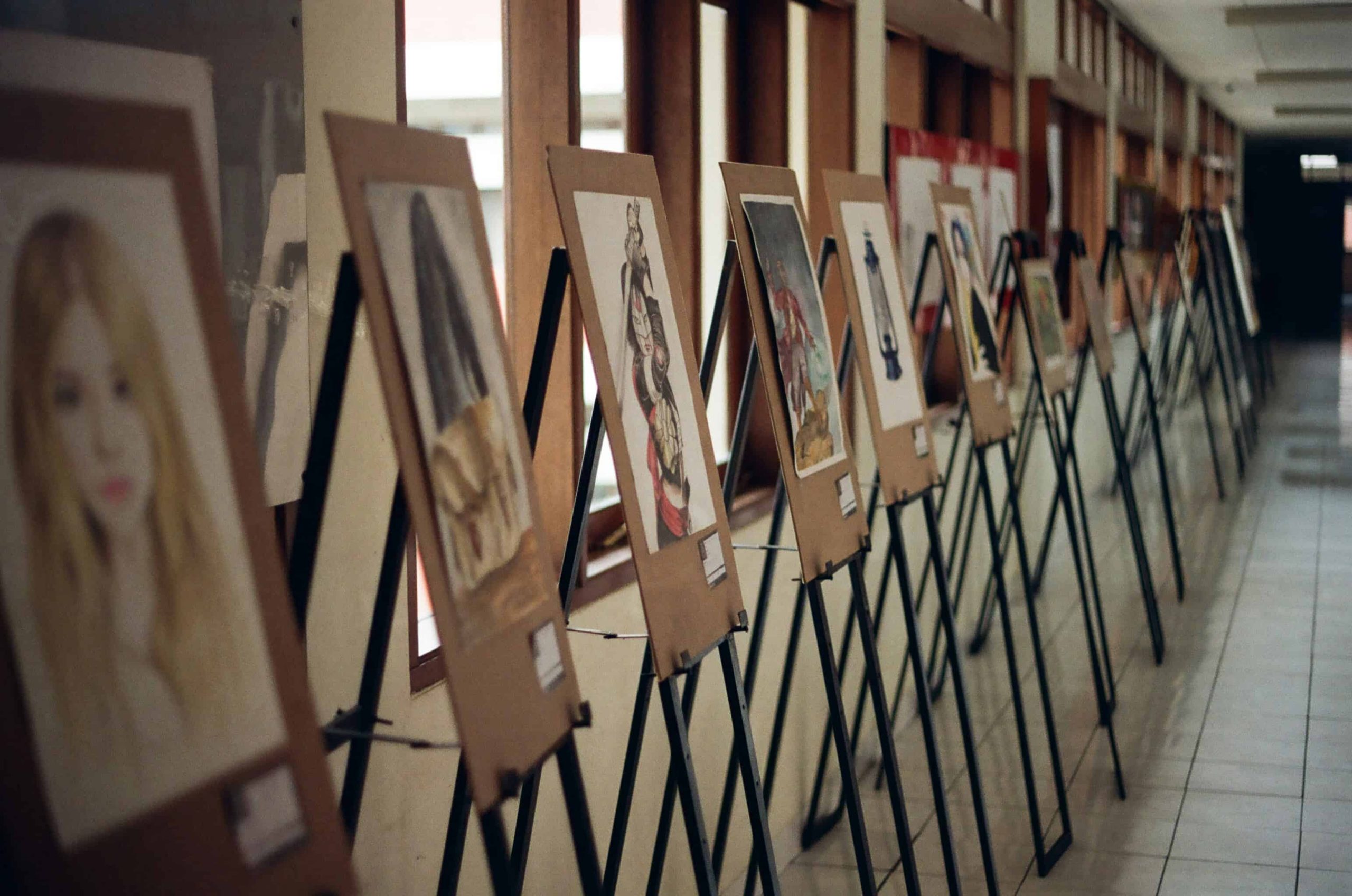
19 Mar Innovative Display Techniques in Art Exhibitions
Art exhibitions have evolved beyond the confines of traditional white walls and static presentations. Today, curators and artists are embracing innovative display techniques to redefine the visitor experience and challenge conventional perceptions of art. From immersive environments to technology-driven enhancements, these techniques offer new avenues for engagement and exploration.
Immersive and Interactive Displays
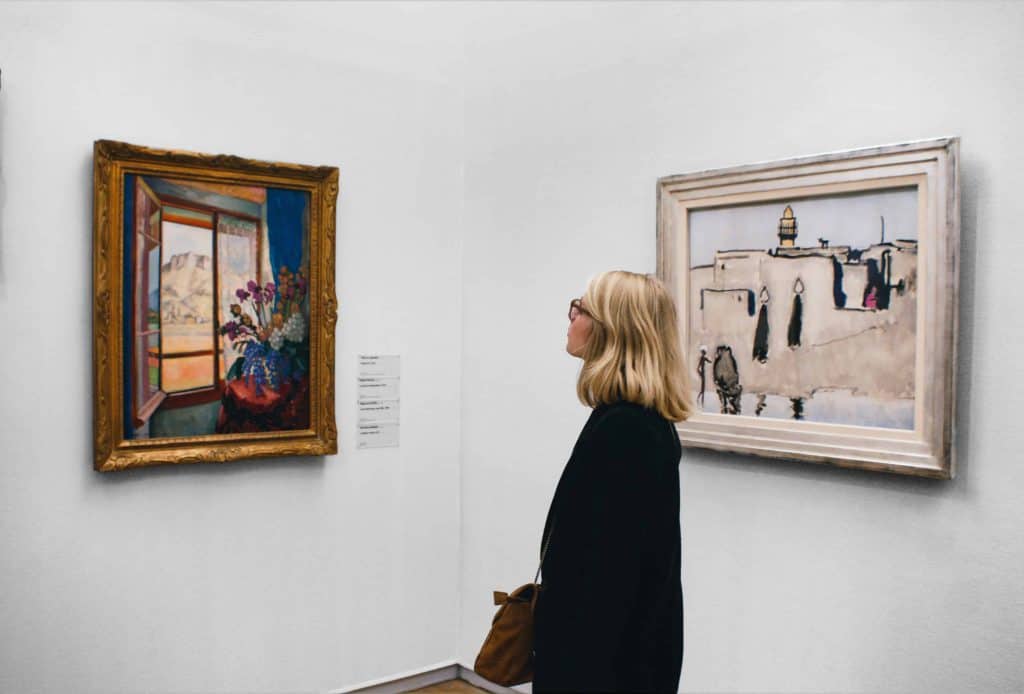
Photo by Pauline Loroy
Projection-Mapping for Display Techniques
Projection mapping is a cutting-edge technology that revolutionizes the way we perceive and interact with physical spaces. By employing advanced projection techniques, surfaces such as walls, floors, and sculptures are transformed into dynamic canvases that breathe life into static environments. With projection mapping, artists can unleash their creativity by showcasing an array of visuals, animations, or interactive elements. Through the interplay of light and imagery, ordinary surfaces transcend their conventional roles, becoming immersive storytelling platforms that captivate and inspire audiences.
Virtual Reality (VR) and Augmented Reality (AR)
Virtual reality (VR) and augmented reality (AR) represent groundbreaking mediums that redefine the boundaries of artistic expression and audience engagement. Through VR and AR experiences, visitors are transported beyond the confines of physical reality, embarking on journeys into the realms of imagination and innovation. Whether donning VR headsets or utilizing AR-enabled devices, participants find themselves immersed in the artwork or the artist’s world, where digital content seamlessly integrates with the physical environment. By overlaying layers of virtual elements onto real-world settings, VR and AR experiences blur the lines between the tangible and the intangible, inviting spectators to explore new dimensions of perception and possibility.
Interactive Installations
Interactive installations offer a dynamic fusion of art and technology, inviting viewers to become active participants in the creative process. Through the integration of touch-sensitive displays, motion sensors, and other interactive elements, installations transcend the traditional boundaries of passive observation, fostering meaningful engagement and collaboration. By encouraging audience participation, these installations transform spectators into co-creators, empowering them to shape their own unique experiences within the artistic narrative. Whether triggering responsive animations, manipulating digital environments, or exploring tactile interfaces, visitors are invited to interact with the artwork in ways that evoke wonder, curiosity, and discovery. In embracing the principles of interactivity, installations become vibrant hubs of collective expression, where the boundaries between artist and audience dissolve, giving rise to shared moments of connection and reflection.
Sensory Experiences
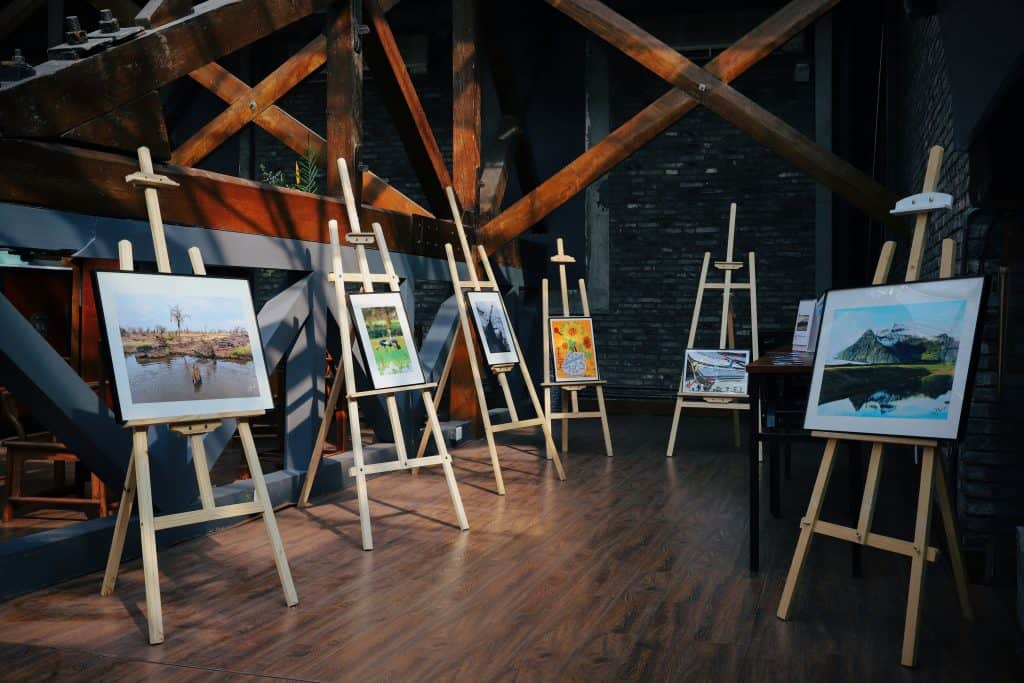
Photo by Raychan
Multisensory Installations
Multisensory installations represent a pinnacle of artistic innovation, seamlessly blending various sensory stimuli to craft immersive and emotionally resonant experiences for visitors. By engaging not only sight but also sound, scent, temperature, and taste, these installations transcend conventional boundaries, enveloping spectators in a symphony of sensations that stimulate the mind and evoke profound emotional responses. Through the strategic integration of sensory elements, artists craft environments that resonate on a visceral level, tapping into the rich tapestry of human perception to forge connections that transcend the limitations of language and intellect. Whether enveloping viewers in the aroma of fragrant flowers, enveloping them in the warmth of ambient lighting, or tantalizing their taste buds with culinary delights, multisensory installations create spaces where art becomes a truly immersive journey of the senses, inviting participants to explore, engage, and connect with the world in profound and meaningful ways.
Haptic Displays
Haptic displays represent a revolutionary advancement in the realm of interactive art, offering visitors the opportunity to transcend the boundaries of visual and auditory perception to engage with artwork on a tactile level. By integrating textures, vibrations, and tactile elements, these displays invite spectators to physically interact with the pieces, deepening their connection to the artwork and enriching their sensory experience. Whether running their fingers over intricate patterns, feeling the subtle vibrations of sound waves, or exploring the contours of sculptural forms, visitors are afforded a heightened sense of intimacy and engagement that transcends traditional modes of observation. In embracing the principles of haptic feedback, displays bridge the gap between the virtual and the tangible, allowing participants to explore the nuances of texture, form, and sensation in ways that defy conventional boundaries. Through the power of touch, haptic displays awaken the senses, inviting viewers to embark on a journey of discovery and exploration that transcends the limitations of perception and invites them to engage with art in a deeply personal and transformative manner.
Unconventional Display Structures
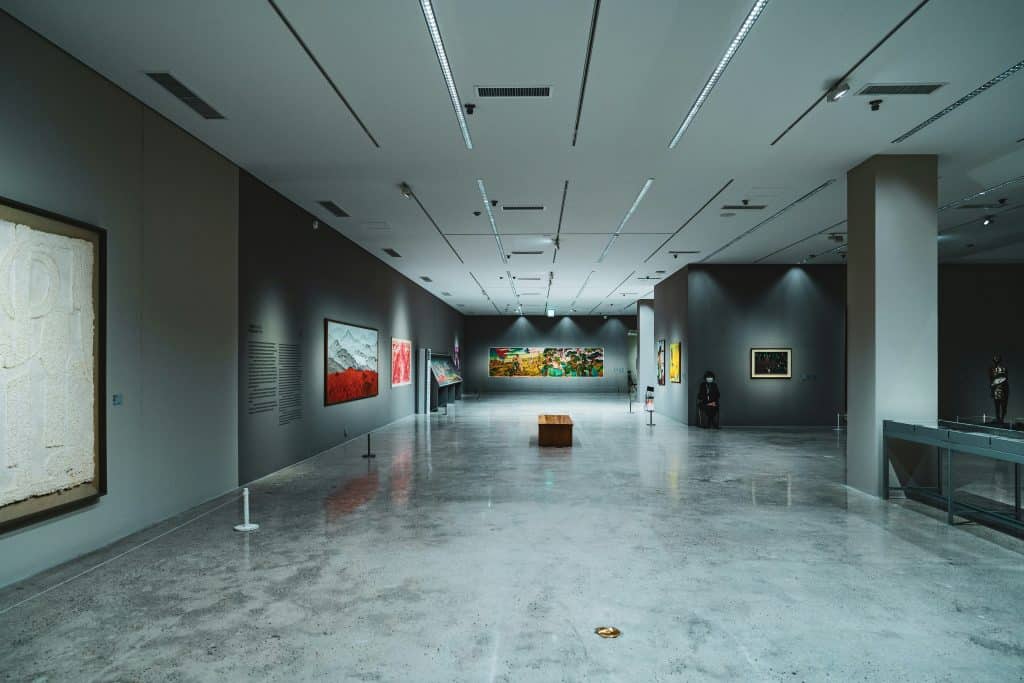
Photo by zero take
Kinetic Displays
Kinetic displays infuse exhibitions with a sense of movement and dynamism, captivating visitors with mesmerizing displays that evolve and transform before their eyes. By incorporating rotating platforms, suspended artworks, or robotic elements, artists imbue their creations with a kinetic energy that breathes life into the space. Whether gracefully rotating sculptures, intricately choreographed movements, or dynamically shifting installations, kinetic displays harness the power of motion to engage viewers on a visceral level, sparking curiosity and wonder with each mesmerizing twist and turn. Through the interplay of form and movement, these displays transcend the static confines of traditional art, inviting spectators to embark on a captivating journey of discovery and exploration that unfolds in real-time before their eyes.
Mirrors and Reflective Surfaces
Mirrors and reflective surfaces serve as powerful tools for artists to manipulate perspective and create immersive illusions within the exhibition space. By strategically placing mirrors or reflective materials, creators play with light and space, distorting perceptions and challenging viewers to reconsider their surroundings. Whether multiplying the impact of a single artwork, creating infinite vistas of reflection, or seamlessly blending reality with fantasy, mirrors and reflective surfaces unlock new dimensions of visual storytelling, inviting participants to engage in a playful exploration of perception and perspective. Through the transformative power of reflection, exhibitions become dynamic environments where reality and illusion converge, inviting visitors to venture beyond the surface and discover the hidden depths of artistic expression.
Unconventional Materials
Unconventional materials offer artists a canvas for experimentation and innovation, allowing them to push the boundaries of creativity and redefine the possibilities of artistic expression. From recycled objects and natural elements to projected light and digital media, these materials serve as catalysts for exploration, inviting creators to reimagine the very nature of art itself. By repurposing everyday objects, integrating organic textures, or harnessing the ethereal qualities of light, artists breathe new life into their work, infusing it with a sense of vitality and spontaneity that captivates the imagination. Whether transforming mundane materials into extraordinary masterpieces or harnessing the elemental forces of nature to create immersive sensory experiences, unconventional materials challenge viewers to see the world through fresh eyes, sparking conversations and inspiring new ways of thinking about art and its place in the world.
Technology-driven Enhancements

Photo by Raychan
Digital Signage
Digital signage represents a cutting-edge tool for enhancing the visitor experience within exhibition spaces, offering dynamic platforms for delivering immersive and informative content. Through interactive information screens, visitors are provided with deeper insights into the artwork, artists, and artistic movements featured within the exhibition. By leveraging multimedia elements such as videos, images, and text, digital signage facilitates a rich exploration of the creative process, enabling spectators to engage with art on multiple levels and gain a deeper appreciation for its context and significance. Whether delving into the historical background of a particular artistic movement, offering behind-the-scenes glimpses into the artist’s studio, or providing interactive maps and guides for navigating the exhibition space, digital signage transforms passive observation into active exploration, empowering visitors to become active participants in the storytelling process.
Facial Recognition and Gesture Tracking
Facial recognition and gesture-tracking technologies revolutionize the visitor experience by personalizing interactions and tailoring content based on individual movements and reactions within the exhibition space. Through sophisticated algorithms and sensors, these technologies analyze facial expressions, body language, and gestures to dynamically adjust the content presented to each visitor in real time. By recognizing and responding to subtle cues and expressions, exhibition installations can adapt their narrative arcs, pacing, and content delivery to align with the unique preferences and interests of each spectator. Whether customizing audiovisual presentations to match the viewer’s mood, guiding visitors through personalized tours based on their browsing history, or eliciting interactive responses through gestural cues, facial recognition and gesture tracking technologies foster deeper connections between audiences and artwork, transforming the exhibition space into a responsive and engaging environment that evolves in tandem with the individual experiences of its visitors.
Data Visualization
Data visualization represents a powerful tool for representing complex artistic concepts, artist biographies, and audience engagement metrics in compelling and interactive formats. By translating abstract ideas and numerical data into visually engaging graphics and interactive displays, data visualization platforms offer visitors new perspectives on the artistic process and its broader cultural significance. Whether mapping the evolution of artistic movements over time, charting the geographic spread of artistic influences, or visualizing audience engagement metrics through real-time feedback mechanisms, data visualization transforms raw data into meaningful insights that enrich the visitor experience and deepen our understanding of art and its impact on society. Through intuitive interfaces and interactive features, data visualization platforms invite viewers to explore, analyze, and interpret information in dynamic and engaging ways, fostering a deeper appreciation for the interconnectedness of artistic expression, historical context, and audience reception.
Collaborative and Participatory Displays
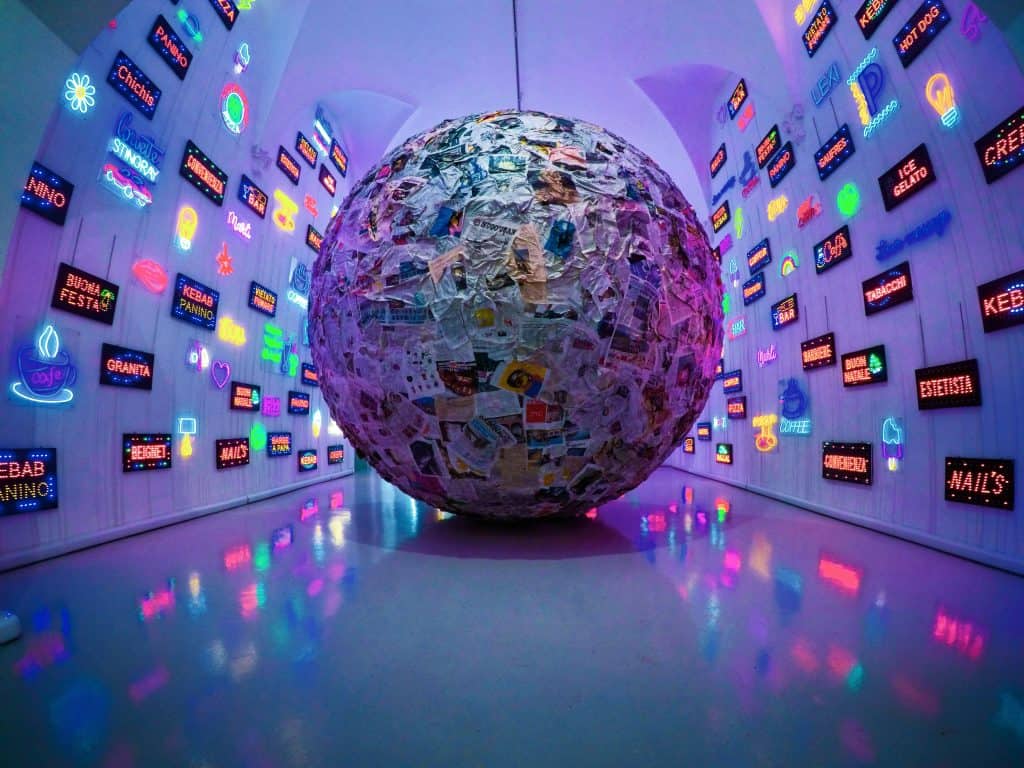
Photo by Sergio Rota
Community-created Installations
Community-created installations serve as dynamic platforms for fostering collaboration, dialogue, and shared creativity within the exhibition space. By inviting visitors to contribute artistic elements or participate in collaborative projects, these installations transcend traditional notions of passive observation, empowering spectators to become active participants in the creative process. Whether through collaborative painting sessions, interactive sculpture workshops, or community-driven storytelling projects, community-created installations celebrate the diversity of voices and perspectives within the local community, fostering connections and building bridges between individuals from different backgrounds and experiences. By providing opportunities for hands-on engagement and meaningful interaction, these installations inspire a sense of ownership and belonging, transforming the exhibition space into a vibrant hub of collective expression and shared creativity.
Social Media Integration
Social media integration represents a powerful tool for amplifying engagement and fostering dialogue within the exhibition space, bridging the gap between the physical and digital realms to connect with audiences on a global scale. By seamlessly integrating social media elements such as hashtags, live feeds, and interactive displays, exhibitions invite visitors to share their experiences, perspectives, and reflections online, extending the reach of the artwork beyond the confines of the gallery walls. Whether capturing moments of inspiration, sharing personal insights, or connecting with fellow art enthusiasts from around the world, social media integration transforms the exhibition space into a dynamic ecosystem of conversation and exchange, where ideas flow freely and connections are forged across boundaries of geography, culture, and language. By harnessing the power of social media, exhibitions become catalysts for meaningful engagement and community-building, sparking conversations, fostering connections, and igniting the imaginations of audiences near and far.
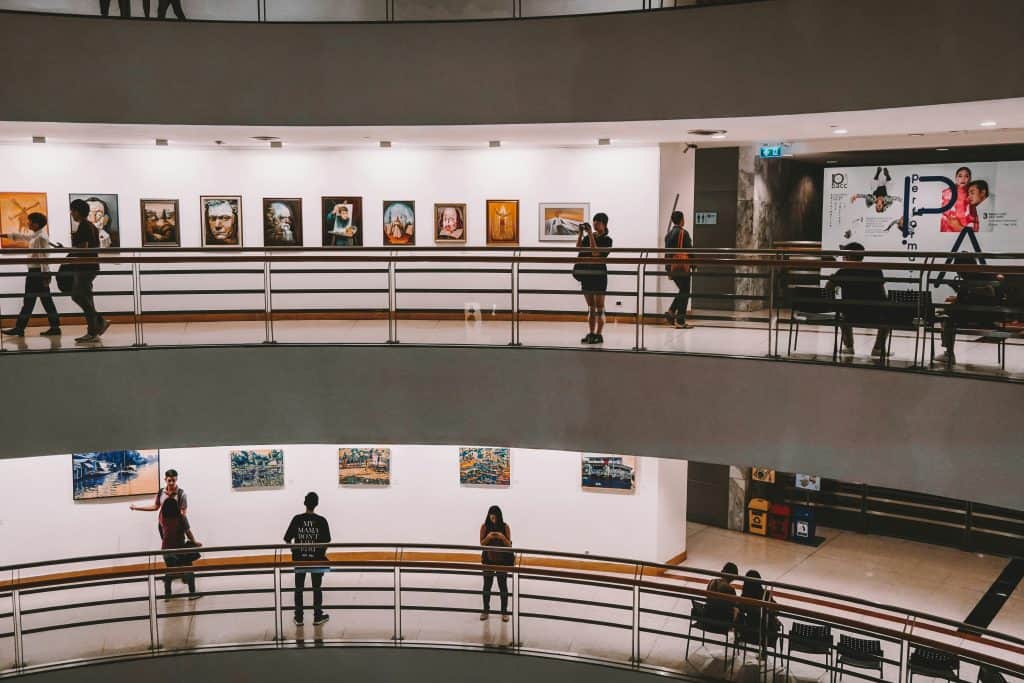
Photo by Mark Chan
Conclusion
Contemporary art exhibitions are undergoing a profound evolution, embracing immersive technologies, interactive displays, and unconventional materials to redefine the visitor experience. From projection mapping and virtual reality to haptic displays and data visualization, these exhibitions engage audiences on multiple sensory levels while fostering meaningful connections between art and observer. Through collaborative installations and social media integration, exhibitions transcend traditional boundaries, becoming dynamic platforms for dialogue, exploration, and community engagement. As galleries continue to innovate and push the boundaries of artistic expression, they inspire audiences to reimagine the role of art in shaping our perceptions and understanding of the world.
Key Takeaways
- Immersive and Interactive: Transforming surfaces with projection mapping, virtual reality (VR), augmented reality (AR), and interactive installations.
- Sensory Experiences: Engaging multiple senses through multisensory installations and haptic displays.
- Unconventional Display: Introducing movement, mirrors, unconventional materials, and kinetic displays.
- Technology-driven Enhancements: Utilizing digital signage, facial recognition, gesture tracking, and data visualization techniques.
- Collaborative and Participatory: Creating community-driven installations and integrating social media for visitor engagement.
FAQs
How do immersive displays enhance the visitor experience?
Immersive displays like projection mapping and VR/AR create captivating environments that transport visitors into the world of the artwork, fostering deeper engagement and emotional connections.
What role does technology play in contemporary art exhibitions?
Technology-driven enhancements such as digital signage, facial recognition, and data visualization offer new ways to interact with and interpret artworks, enriching the overall exhibition experience.
Are these innovative techniques suitable for all types of art?
Technology-driven enhancements such as digital signage, facial recognition, and data visualization offer new ways to interact with and interpret artworks, enriching the overall exhibition experience.
“Digital Exhibition Design and Layout Tips” offers expert insights and best practices for creating compelling and user-friendly digital exhibition designs and layouts.

